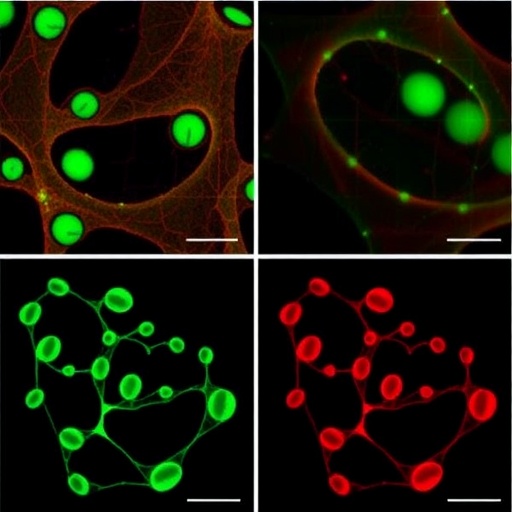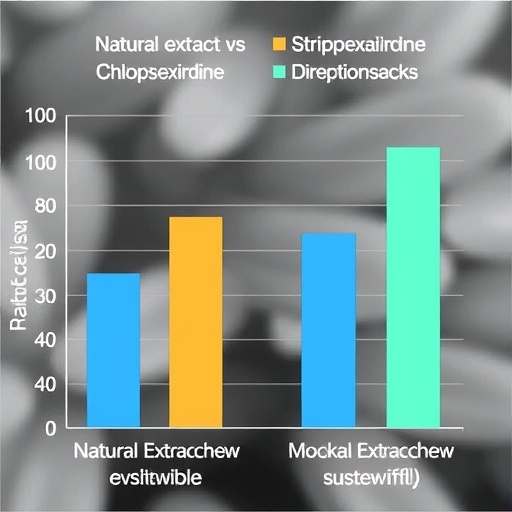Recent advancements in reproductive biology have illuminated the intricate mechanisms underlying ovarian function and hormonal regulation. A fascinating study led by Zhang et al. has made significant strides in this domain, unveiling the role of a long non-coding RNA (lncRNA) named LncPrep + 96 kb in modulating the secretion of inhibin B by ovarian granulosa cells. This research, published in Reproductive Sciences, dives deep into the molecular interplay that governs reproductive health, providing new avenues for understanding ovarian physiology and potential therapeutic interventions.
Inhibin B, a glycoprotein hormone produced by the ovarian granulosa cells, is crucial for regulating follicle-stimulating hormone (FSH) secretion from the pituitary gland. Its levels are pivotal for the proper functioning of the reproductive axis and can significantly impact fertility outcomes. The study’s authors sought to explore how LncPrep + 96 kb influences the secretion of this essential hormone, particularly under varying physiological and pathological conditions.
What is particularly striking about LncPrep + 96 kb is its association with endothelial differentiation-associated factor 1 (EDAF1), a protein that plays a significant role in vascular development and endothelial cell function. The researchers hypothesized that LncPrep + 96 kb might interact with EDAF1 to affect inhibin B secretion in granulosa cells, thereby affecting ovarian health. This hypothesis laid the groundwork for a series of experiments that aimed to elucidate the molecular mechanisms at play.
Utilizing a combination of in vitro and in vivo models, Zhang et al. meticulously examined the expression patterns of LncPrep + 96 kb and its correlation with EDAF1 and inhibin B production. Their results revealed that upregulation of LncPrep + 96 kb leads to a notable decrease in the secretion of inhibin B. This finding underscores the potential of LncPrep + 96 kb as a significant regulatory element in granulosa cell function. Such molecular insights are invaluable, considering the rising interest in lncRNAs as key players in reproductive biology.
Moreover, the study provides a compelling framework for understanding how disruptions in lncRNA expressions could correlate with reproductive disorders. By establishing a clear link between LncPrep + 96 kb and the secretion of key hormones, this research paves the way for further investigations into the role of non-coding RNAs in ovarian dysfunctions, including conditions like polycystic ovary syndrome (PCOS), premature ovarian failure, and infertility.
The methodology employed in this study is noteworthy as well. The researchers used state-of-the-art techniques, including RNA sequencing, qPCR, and various biochemical assays, to establish the functional significance of LncPrep + 96 kb in regulating EDAF1 and inhibin B levels. These methodological rigor and precision ensure the reliability of the findings and open pathways for other researchers to replicate or build upon this work.
In addition to its immediate implications for fertility research, this study highlights the broader significance of lncRNAs in physiological processes beyond reproductive health, including their potential roles in cancer biology, metabolic syndrome, and cardiovascular diseases. By shedding light on how specific lncRNAs can regulate critical biological pathways, this research supports the growing field of RNA biology and emphasizes the complexity of gene regulation.
Furthermore, the impact of this study could extend to clinical applications, particularly in developing novel biomarkers for ovarian function assessment. Given the importance of timely and accurate diagnosis in reproductive health, identifying lncRNA signatures as potential biomarkers could revolutionize current practices in fertility treatments. As research advances, these insights could be translated into targeted therapies aimed at restoring normal ovarian function in affected individuals.
As the scientific community delves deeper into the realm of lncRNAs, Zhang et al.’s work serves as a reminder of the vast potential that lies in understanding the genetic regulation of reproductive processes. Their findings may inspire a new generation of research aimed at uncovering the roles of various lncRNAs not only in ovarian biology but also in other critical systems.
This extensive exploration into LncPrep + 96 kb and its regulatory functions highlights the importance of interdisciplinary approaches in biomedical research. By integrating molecular biology, reproductive endocrinology, and clinical insights, researchers can work towards a more holistic understanding of reproductive health and disease.
Moreover, the enthusiasm surrounding this research is palpable within the academic community, with discussions emerging about the implications of such findings for future studies. The dialogue is no longer confined to the lab; it’s a conversation that aims to bridge the gap between bench science and clinical application, underlining the real-world significance of these discoveries.
As this field continues to evolve, it is essential for researchers to maintain a collaborative spirit, sharing findings and insights that could lead to breakthroughs in reproductive health. Moving forward, the challenge will be to establish a comprehensive understanding of lncRNA functions throughout the reproductive cycle and their potential impactful roles in therapies, thus enhancing the quality of life for many individuals facing reproductive challenges.
In conclusion, Zhang et al. have provided pivotal insights into the regulatory mechanisms of ovarian granulosa cells through their study on LncPrep + 96 kb, opening new frontiers in reproductive science. The implications of this research are far-reaching, signaling a future where molecular insights lead to tangible improvements in reproductive health management.
Subject of Research: The role of LncPrep + 96 kb in inhibiting the secretion of inhibin B in ovarian granulosa cells.
Article Title: LncPrep + 96 kb Inhibits the Secretion of Inhibin B in Ovarian Granulosa Cells Through Regulating Endothelial Differentiation-Associated Factor 1.
Article References:
Zhang, H., Liu, J., Mou, C. et al. LncPrep + 96 kb Inhibits the Secretion of Inhibin B in Ovarian Granulosa Cells Through Regulating Endothelial Differentiation-Associated Factor 1.
Reprod. Sci. (2025). https://doi.org/10.1007/s43032-025-02007-1
Image Credits: AI Generated
DOI: https://doi.org/10.1007/s43032-025-02007-1
Keywords: lncRNA, LncPrep + 96 kb, inhibin B, ovarian granulosa cells, endothelial differentiation-associated factor 1, reproductive biology, fertility, hormonal regulation.
Tags: endothelial differentiation-associated factor 1follicle-stimulating hormone controlhormonal regulation in ovariesinhibin B secretion regulationLncPrep+96kblong non-coding RNA functionmolecular mechanisms of fertilityovarian granulosa cellsovarian physiology and healthreproductive biology advancementsreproductive health researchtherapeutic interventions in reproduction





